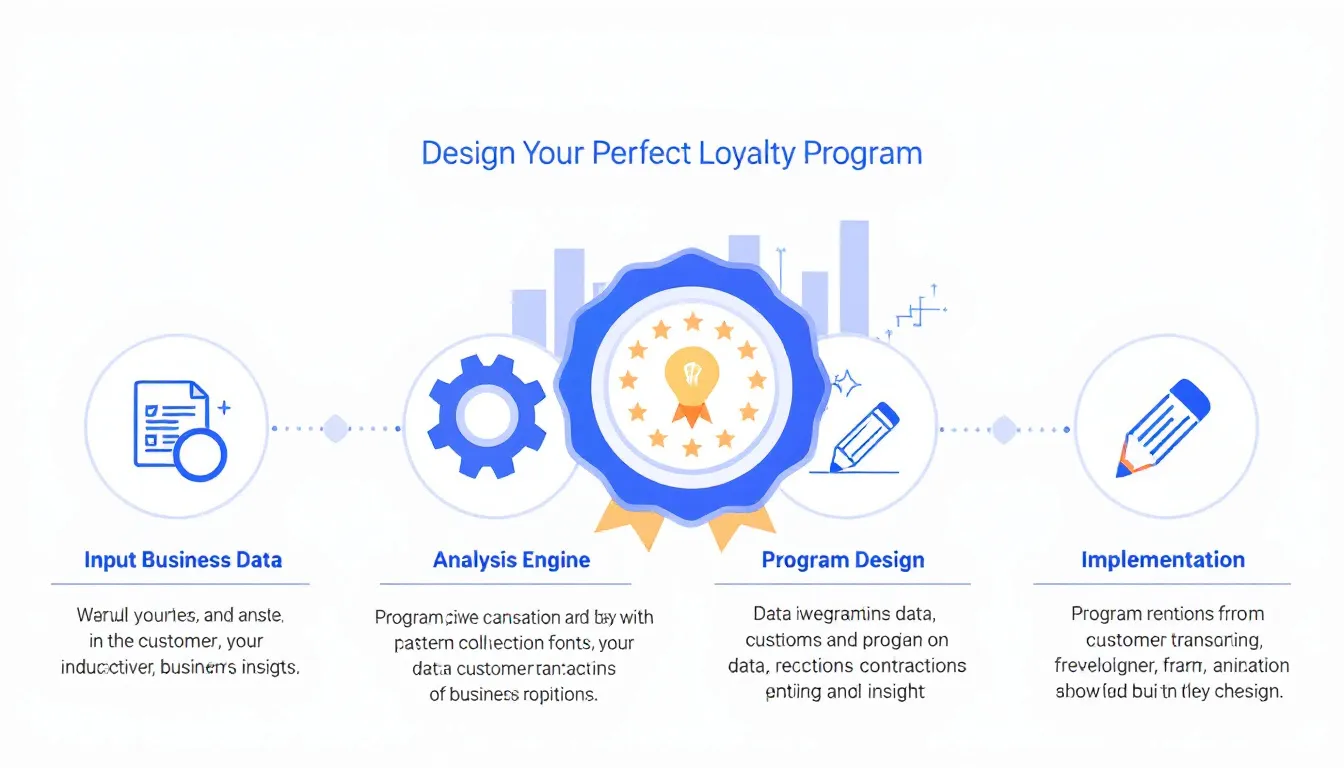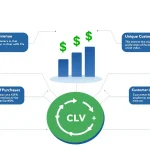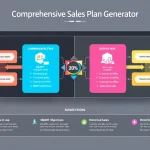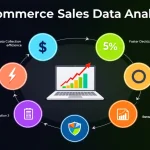Is this tool helpful?
How to Use the Loyalty Program Recommendation Tool Effectively
The Loyalty Program Recommendation Tool is designed to help businesses create effective customer retention strategies. Here’s a detailed guide on using each field:
1. Type of Business or Industry
Enter your specific business category. Examples:
- “Specialty coffee shop and bakery”
- “Boutique fitness studio”
2. Target Customer Base Description
Provide detailed customer demographics and characteristics:
- “Health-conscious urban professionals, age 25-40, interested in wellness”
- “Tech-savvy parents with young children, dual-income households”
3. Average Transaction Value
Input your typical sale amount in USD. This helps calibrate reward thresholds and benefits.
4. Purchase Frequency
Indicate how often customers typically make purchases or your desired frequency.
5. Competitor Programs
Detail any known competitor loyalty initiatives to help differentiate your program.
Understanding Loyalty Program Design
A well-structured loyalty program can significantly impact customer retention and revenue growth. The tool analyzes your inputs to create customized recommendations based on industry best practices and customer behavior patterns.
Key Components of Effective Loyalty Programs
- Reward Structure Design
- Point Accumulation Systems
- Tiered Benefits
- Engagement Mechanics
Benefits of Using the Loyalty Program Recommendation Tool
1. Data-Driven Decision Making
The tool processes your business specifics to generate recommendations aligned with proven loyalty strategies.
2. Competitive Advantage
Receive insights on differentiating your loyalty program from competitors while maintaining profitability.
3. Customer-Centric Approach
Create programs that resonate with your target audience’s preferences and behaviors.
4. Resource Optimization
Save time and resources by accessing expert recommendations instantly.
Mathematical Framework for Loyalty Program Design
The tool utilizes several key formulas to optimize reward structures:
Reward Point Value Calculation:
$$\text{Point Value} = \frac{\text{Reward Value in USD}}{\text{Points Required for Reward}}$$Customer Lifetime Value (CLV) Impact:
$$\text{CLV Impact} = \text{Average Transaction} \times \text{Annual Frequency} \times \text{Program Retention Rate}$$Practical Applications and Examples
Example 1: Coffee Shop Loyalty Program
Input Data:
- Business Type: Specialty Coffee Shop
- Customer Base: Urban professionals
- Average Transaction: $7.50
- Frequency: 3-4 times weekly
Recommended Program Structure:
- Points System: 1 point per dollar
- Reward Tiers: Bronze, Silver, Gold
- Benefits: Free drinks, priority service, exclusive tastings
Example 2: Fitness Studio Program
Input Data:
- Business Type: Boutique Fitness
- Customer Base: Health-conscious millennials
- Average Transaction: $150
- Frequency: Monthly membership
Recommended Program Structure:
- Tiered Benefits System
- Milestone Rewards
- Partner Perks
Best Practices for Implementation
1. Program Launch Strategy
- Soft launch phase
- Member feedback collection
- Program adjustments
2. Communication Plan
- Clear benefit explanation
- Regular member updates
- Engagement campaigns
3. Performance Monitoring
- Member acquisition rates
- Redemption patterns
- Revenue impact
Frequently Asked Questions
What types of businesses can benefit from this tool?
Any business with repeat customers can benefit, including retail stores, restaurants, service providers, and e-commerce platforms.
How often should loyalty program structures be reviewed?
Regular quarterly reviews are recommended, with major updates considered annually based on performance data.
What makes a loyalty program successful?
Success factors include clear value proposition, easy point accumulation, attractive rewards, and seamless redemption process.
Should programs include expiration dates for points?
Consider 12-24 month expiration periods to encourage regular engagement while maintaining program value.
How can businesses measure loyalty program ROI?
Track metrics like member vs. non-member purchase frequency, average transaction value, and retention rates.
What are trending features in loyalty programs?
Mobile integration, experiential rewards, personalized offers, and sustainability-focused benefits are current trends.
Advanced Program Features to Consider
1. Digital Integration
- Mobile app functionality
- Digital wallet integration
- QR code scanning
2. Personalization Options
- Birthday rewards
- Purchase history-based offers
- Customized communication
3. Social Components
- Referral bonuses
- Social media integration
- Community events
Success Metrics and KPIs
Essential Tracking Metrics:
- Program enrollment rate
- Active member percentage
- Average member spend
- Redemption rate
- Member retention rate
By following these guidelines and utilizing the tool’s recommendations, businesses can develop loyalty programs that drive customer engagement, increase retention, and boost revenue growth.
Important Disclaimer
The calculations, results, and content provided by our tools are not guaranteed to be accurate, complete, or reliable. Users are responsible for verifying and interpreting the results. Our content and tools may contain errors, biases, or inconsistencies. We reserve the right to save inputs and outputs from our tools for the purposes of error debugging, bias identification, and performance improvement. External companies providing AI models used in our tools may also save and process data in accordance with their own policies. By using our tools, you consent to this data collection and processing. We reserve the right to limit the usage of our tools based on current usability factors. By using our tools, you acknowledge that you have read, understood, and agreed to this disclaimer. You accept the inherent risks and limitations associated with the use of our tools and services.







